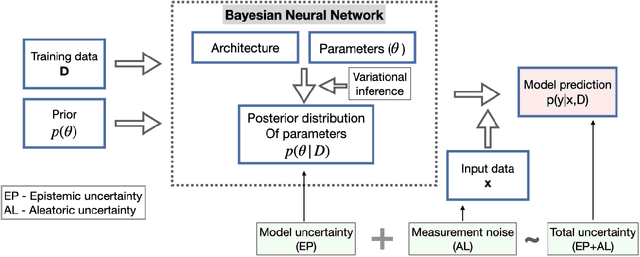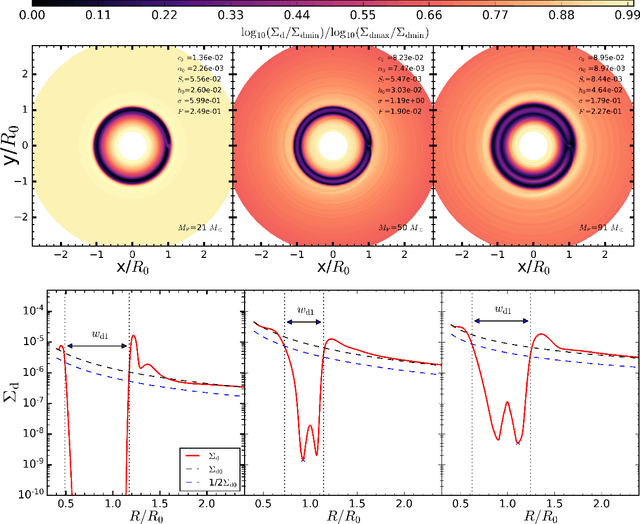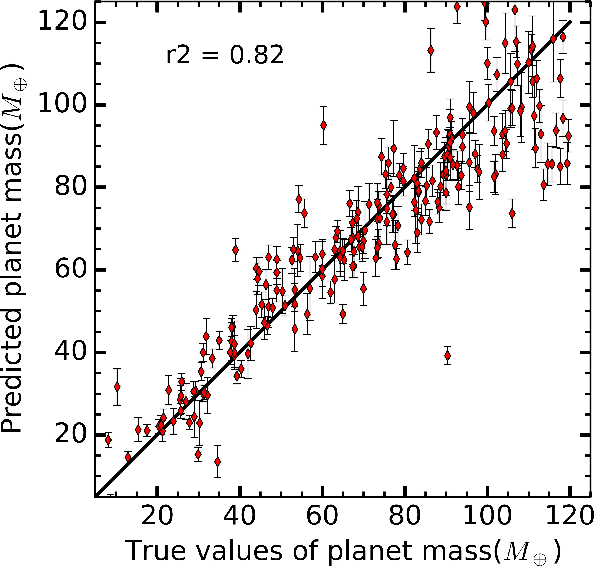Using Bayesian Deep Learning to infer Planet Mass from Gaps in Protoplanetary Disks
Paper and Code
Feb 23, 2022



Planet induced sub-structures, like annular gaps, observed in dust emission from protoplanetary disks provide a unique probe to characterize unseen young planets. While deep learning based model has an edge in characterizing the planet's properties over traditional methods, like customized simulations and empirical relations, it lacks in its ability to quantify the uncertainty associated with its predictions. In this paper, we introduce a Bayesian deep learning network "DPNNet-Bayesian" that can predict planet mass from disk gaps and provides uncertainties associated with the prediction. A unique feature of our approach is that it can distinguish between the uncertainty associated with the deep learning architecture and uncertainty inherent in the input data due to measurement noise. The model is trained on a data set generated from disk-planet simulations using the \textsc{fargo3d} hydrodynamics code with a newly implemented fixed grain size module and improved initial conditions. The Bayesian framework enables estimating a gauge/confidence interval over the validity of the prediction when applied to unknown observations. As a proof-of-concept, we apply DPNNet-Bayesian to dust gaps observed in HL Tau. The network predicts masses of $ 86.0 \pm 5.5 M_{\Earth} $, $ 43.8 \pm 3.3 M_{\Earth} $, and $ 92.2 \pm 5.1 M_{\Earth} $ respectively, which are comparable to other studies based on specialized simulations.
 Add to Chrome
Add to Chrome Add to Firefox
Add to Firefox Add to Edge
Add to Edge